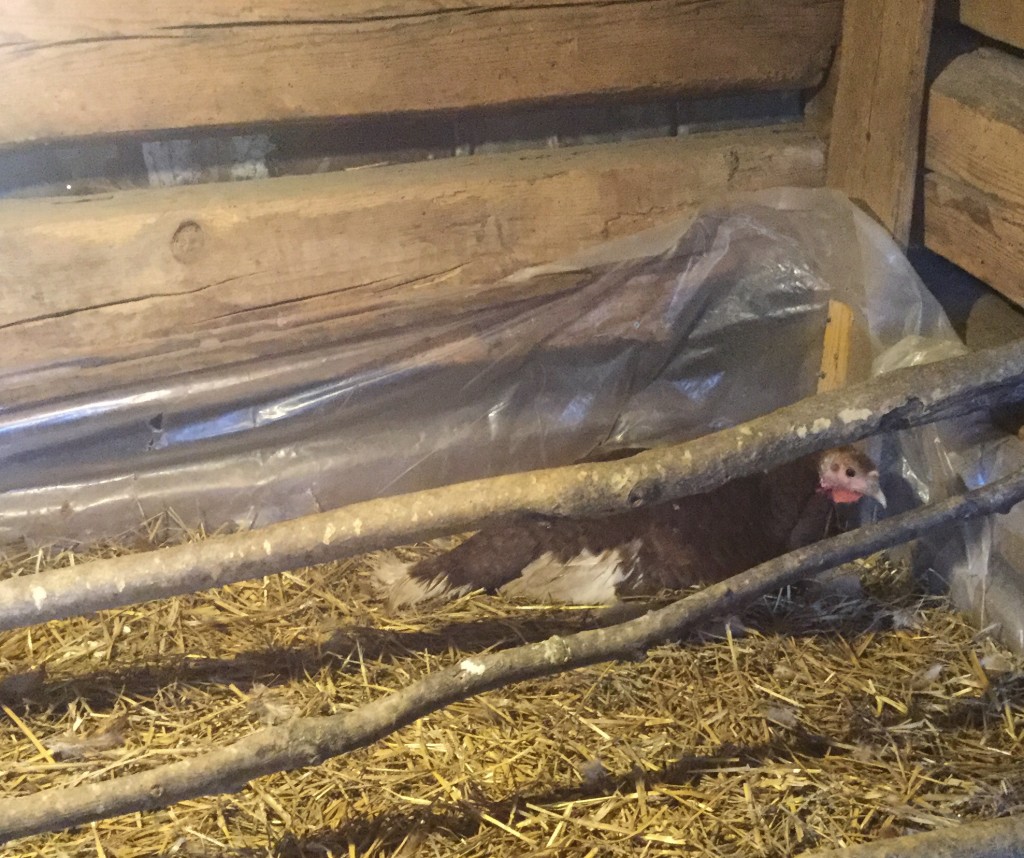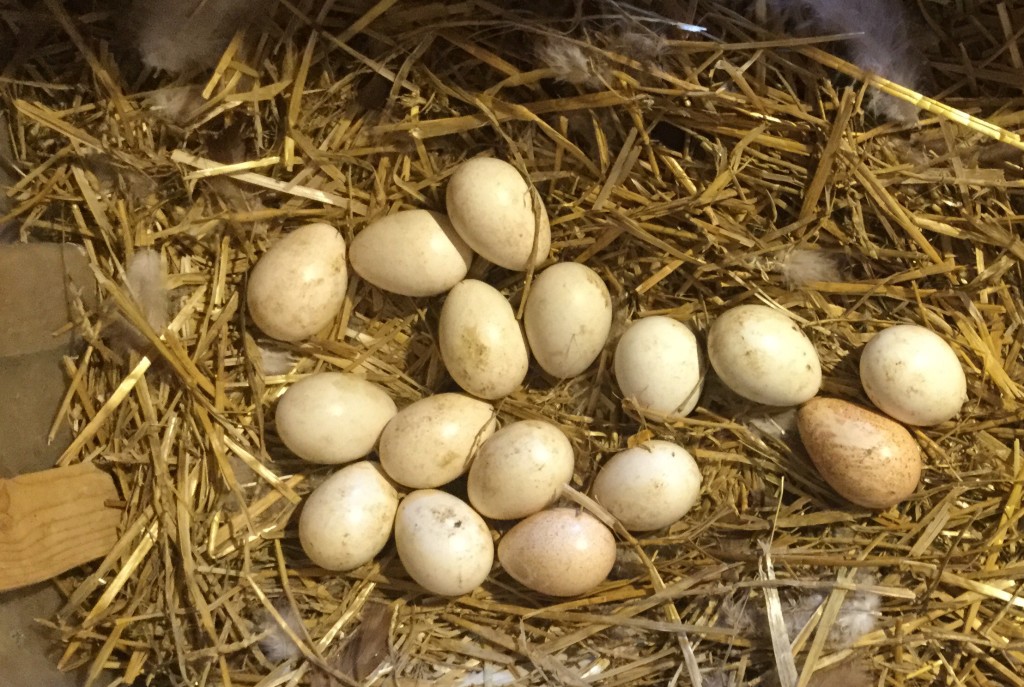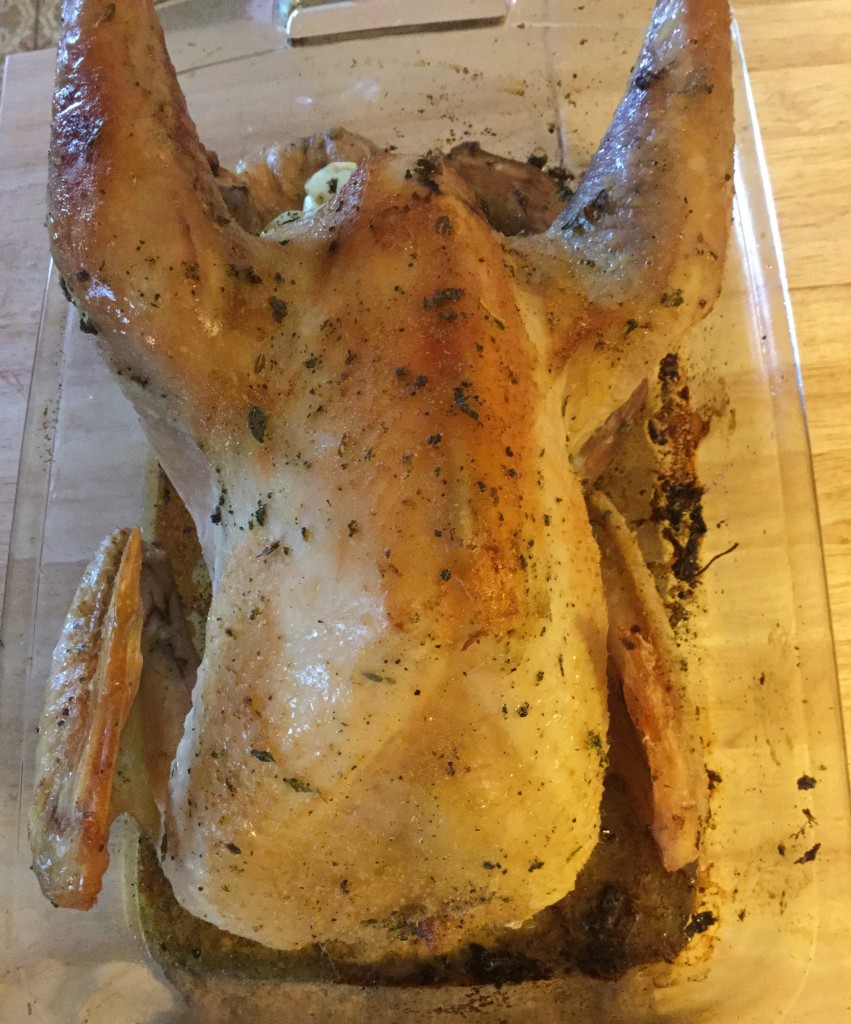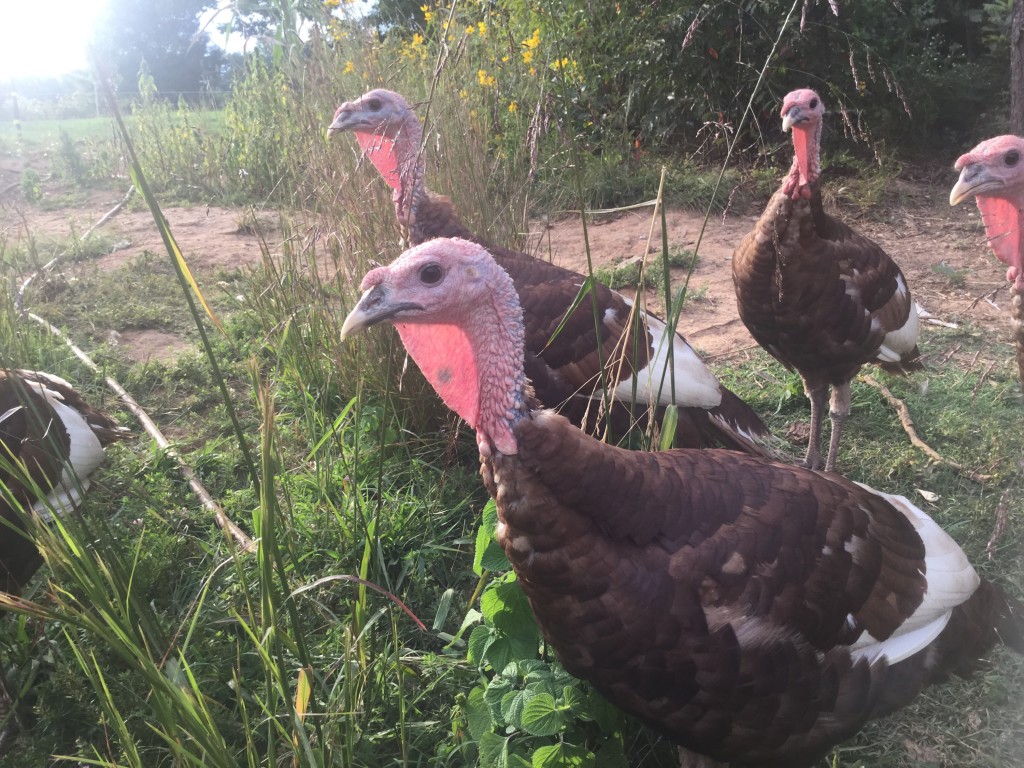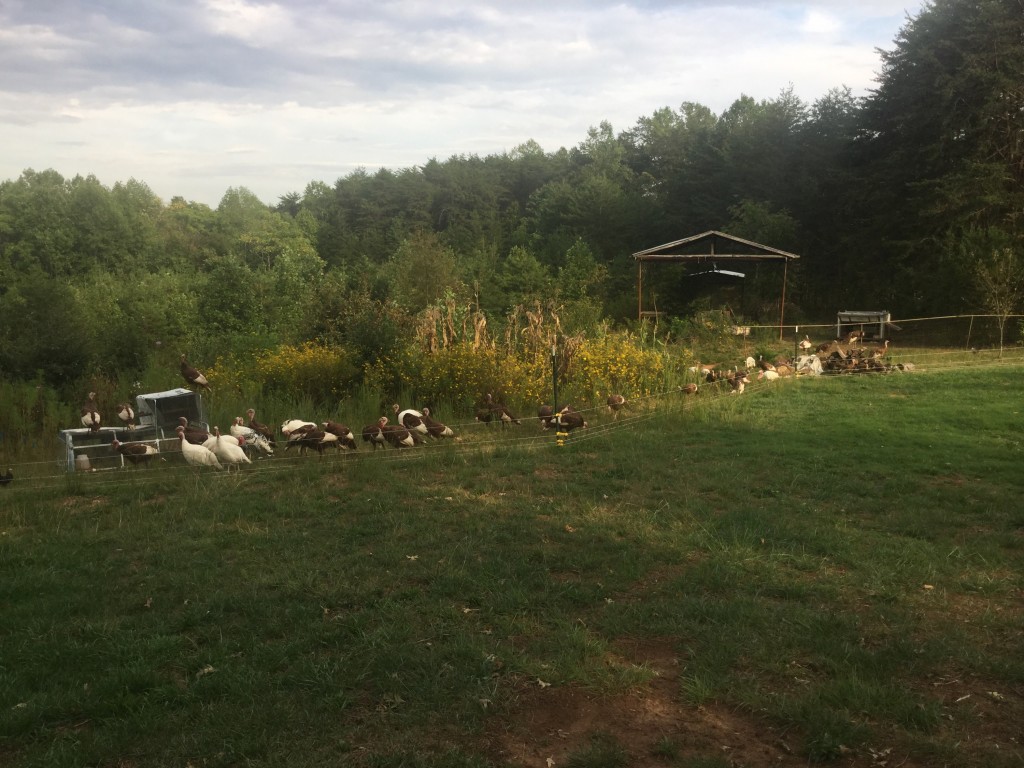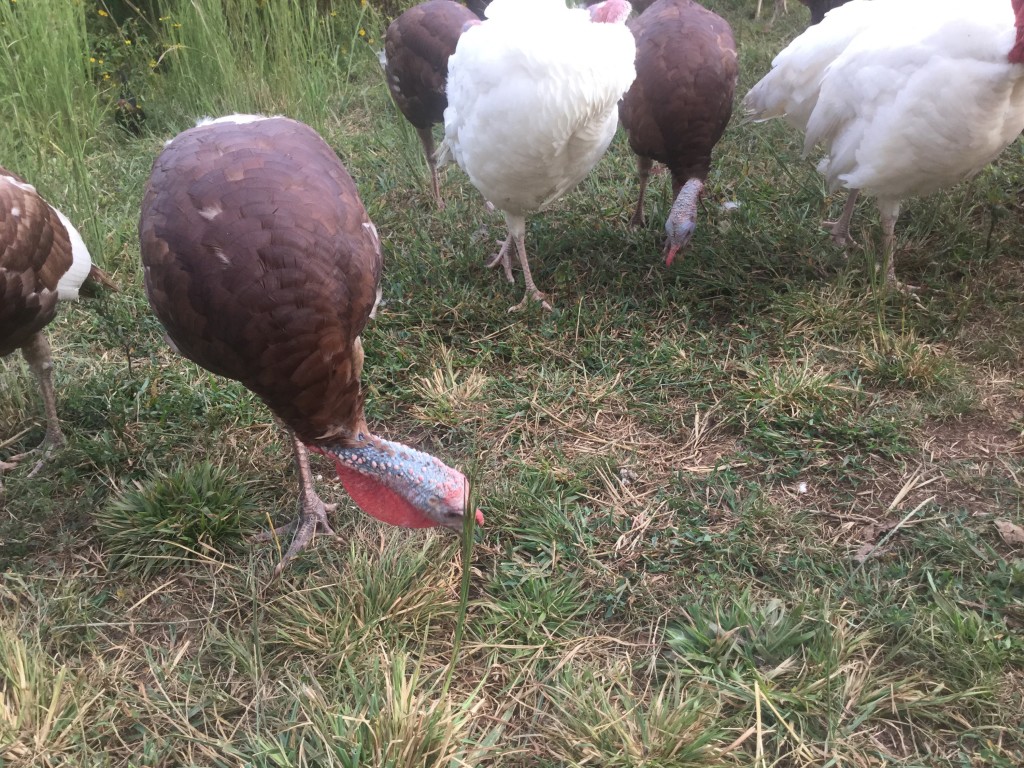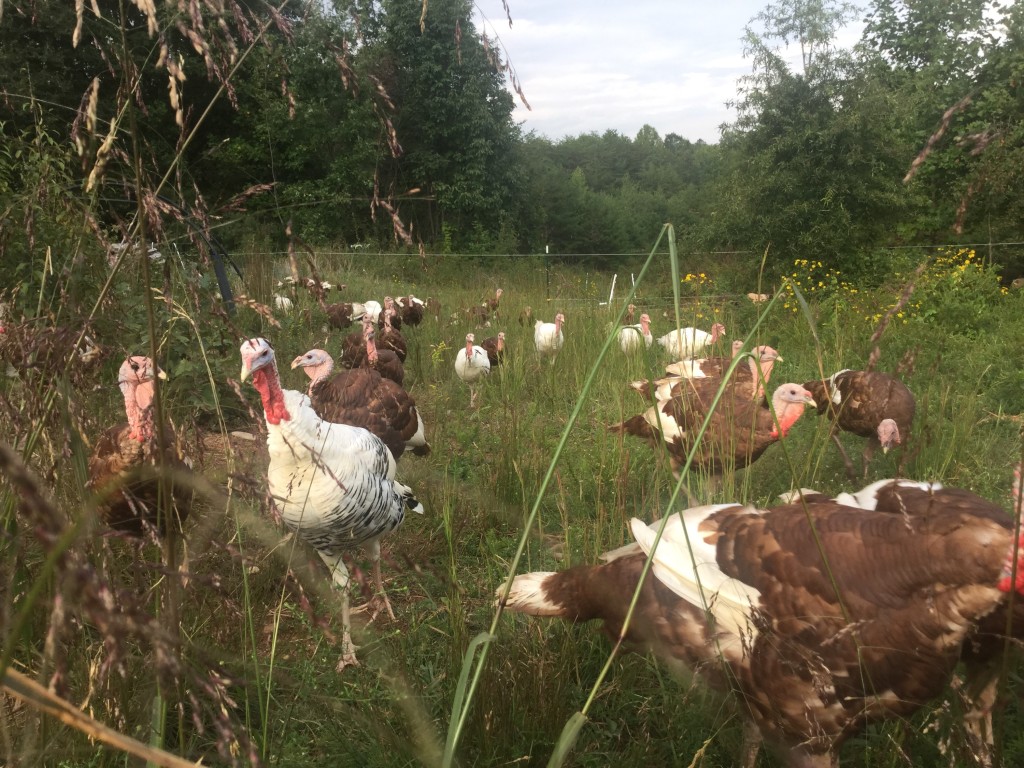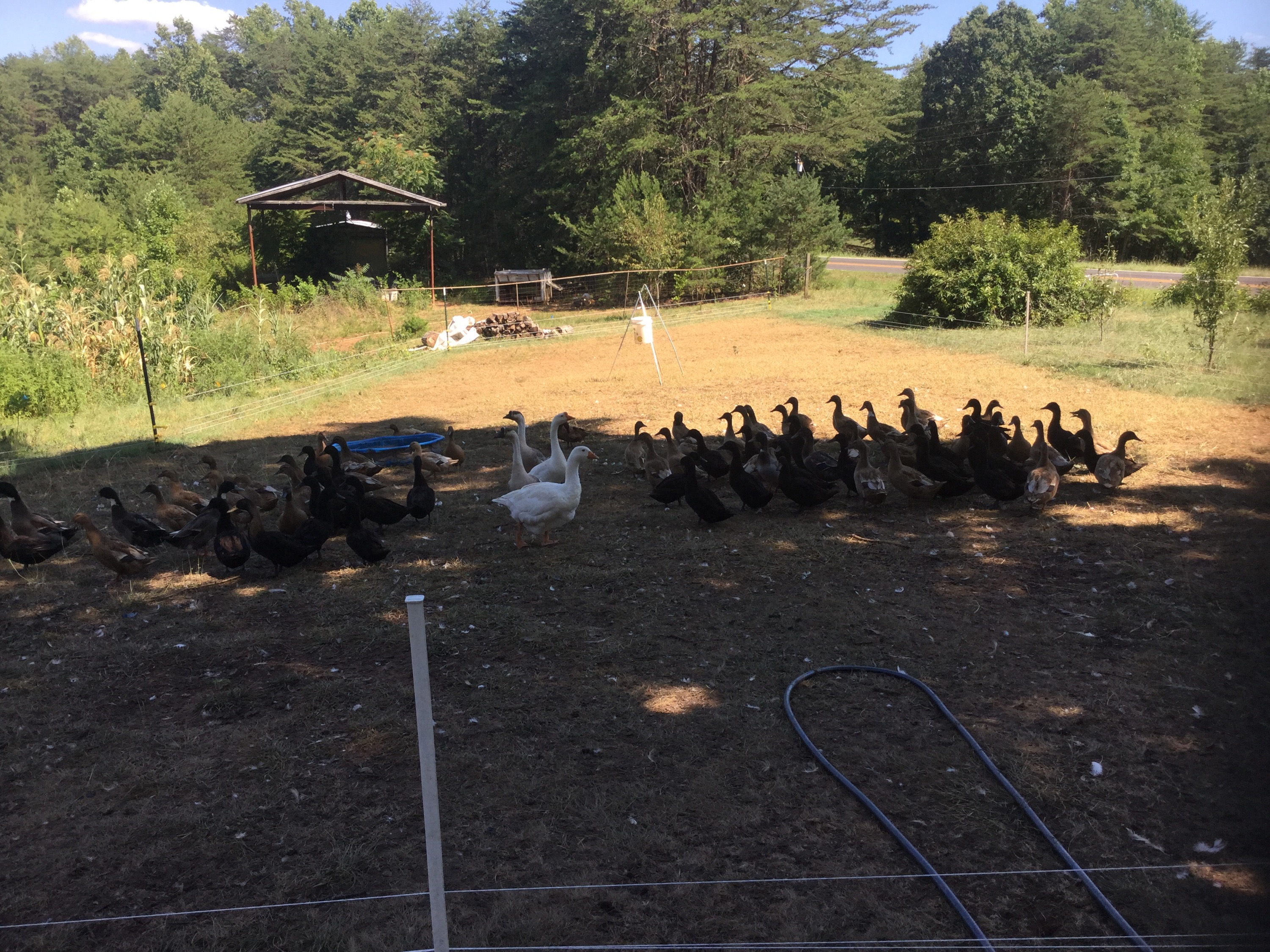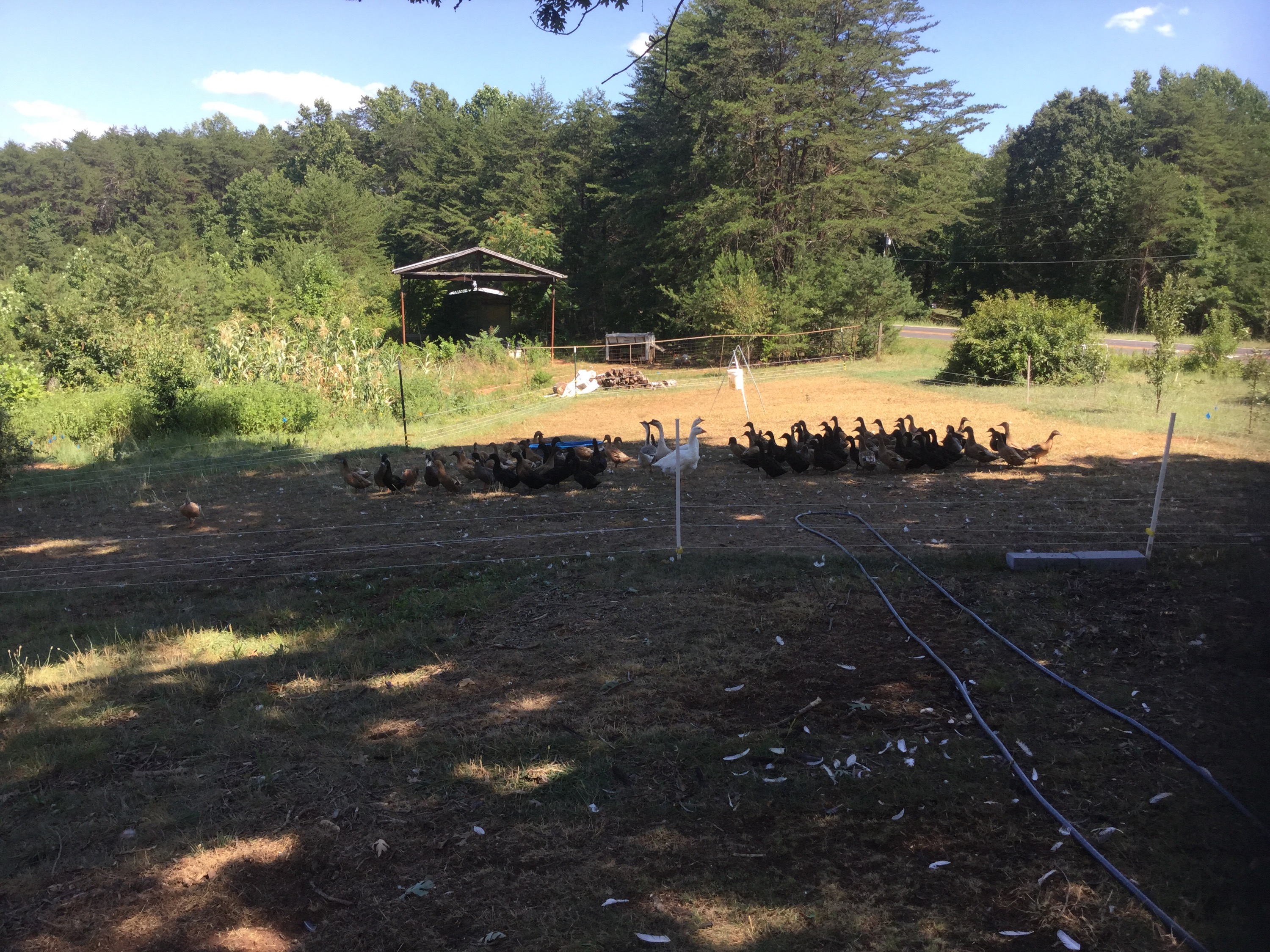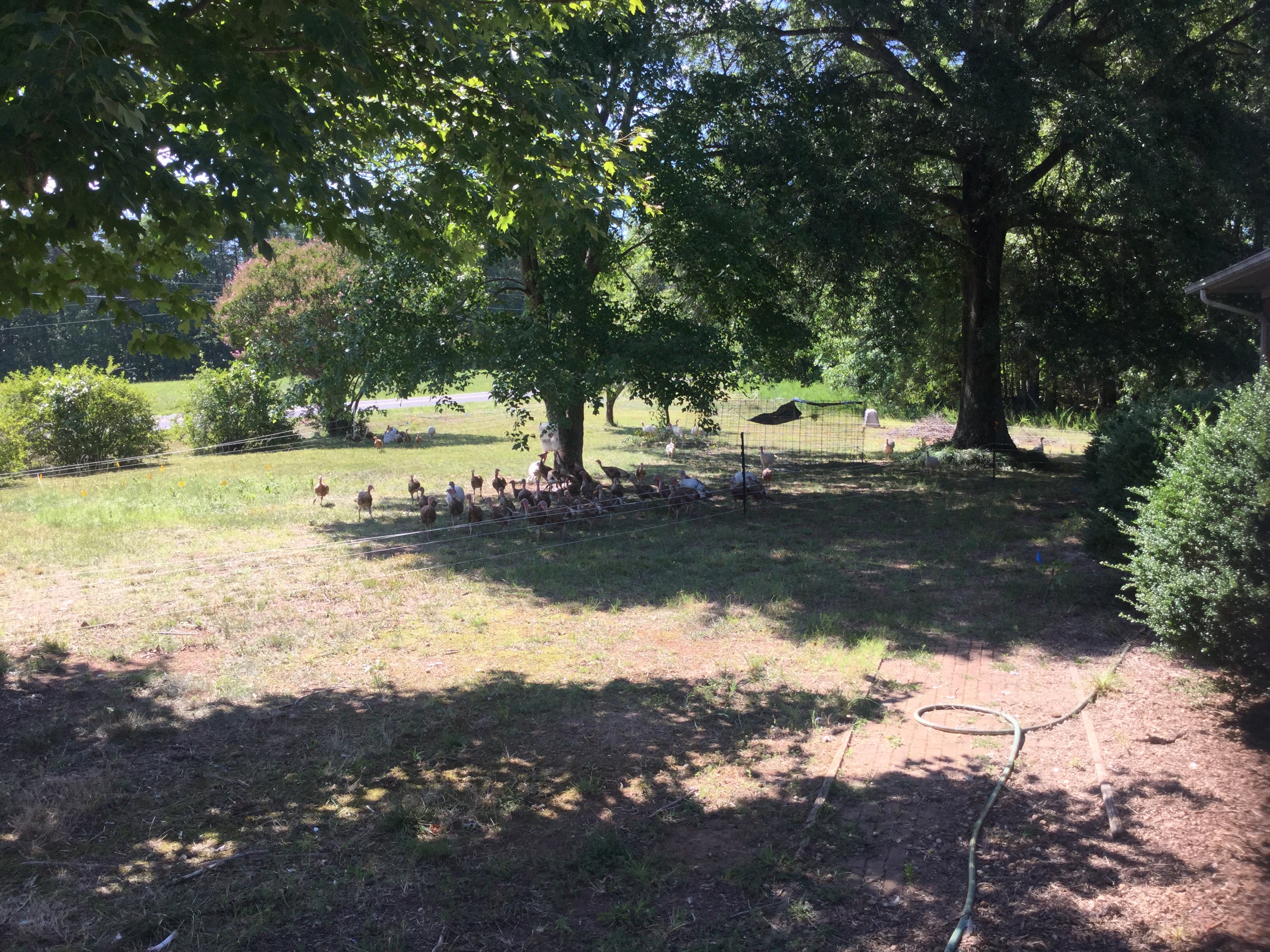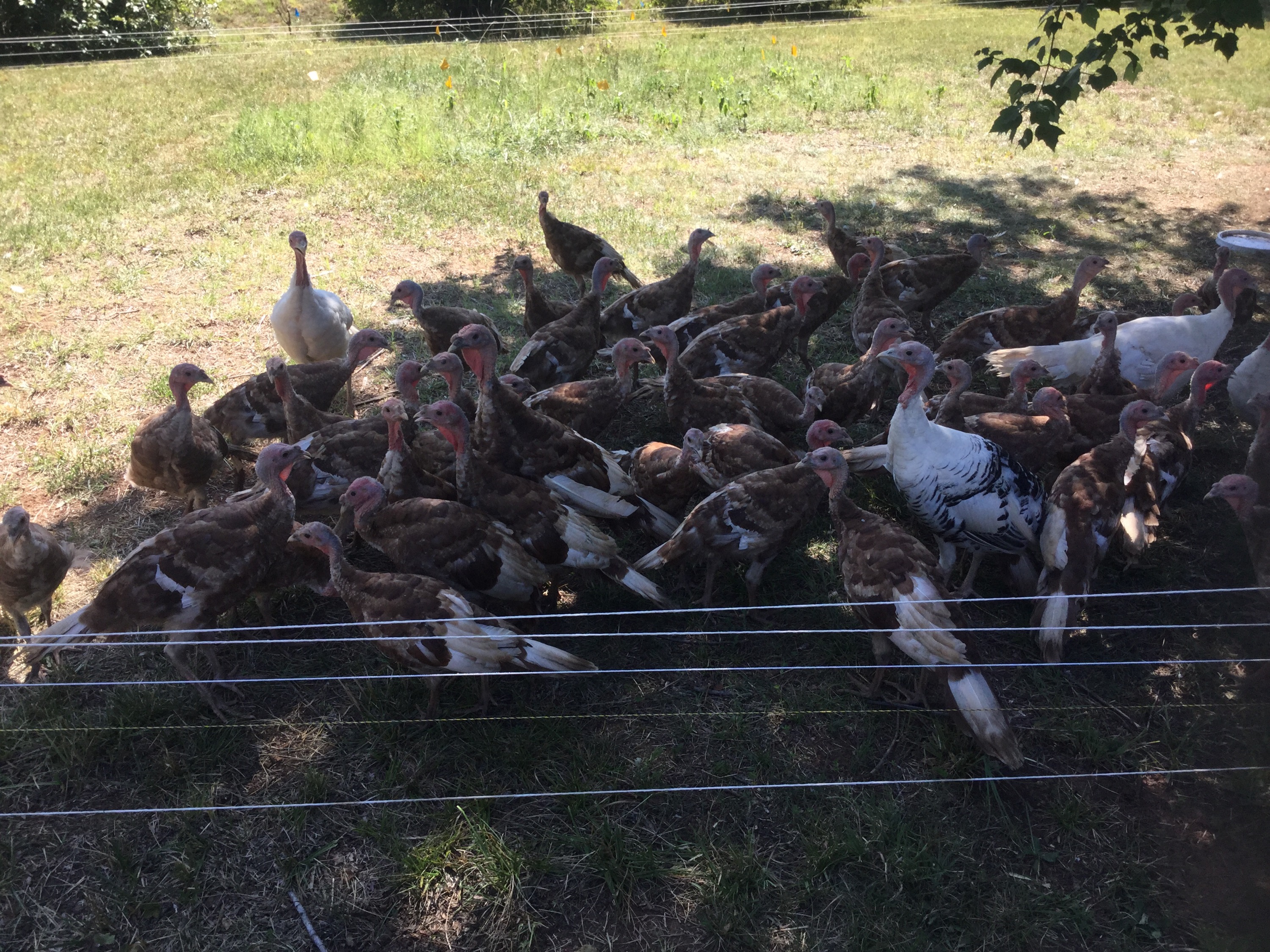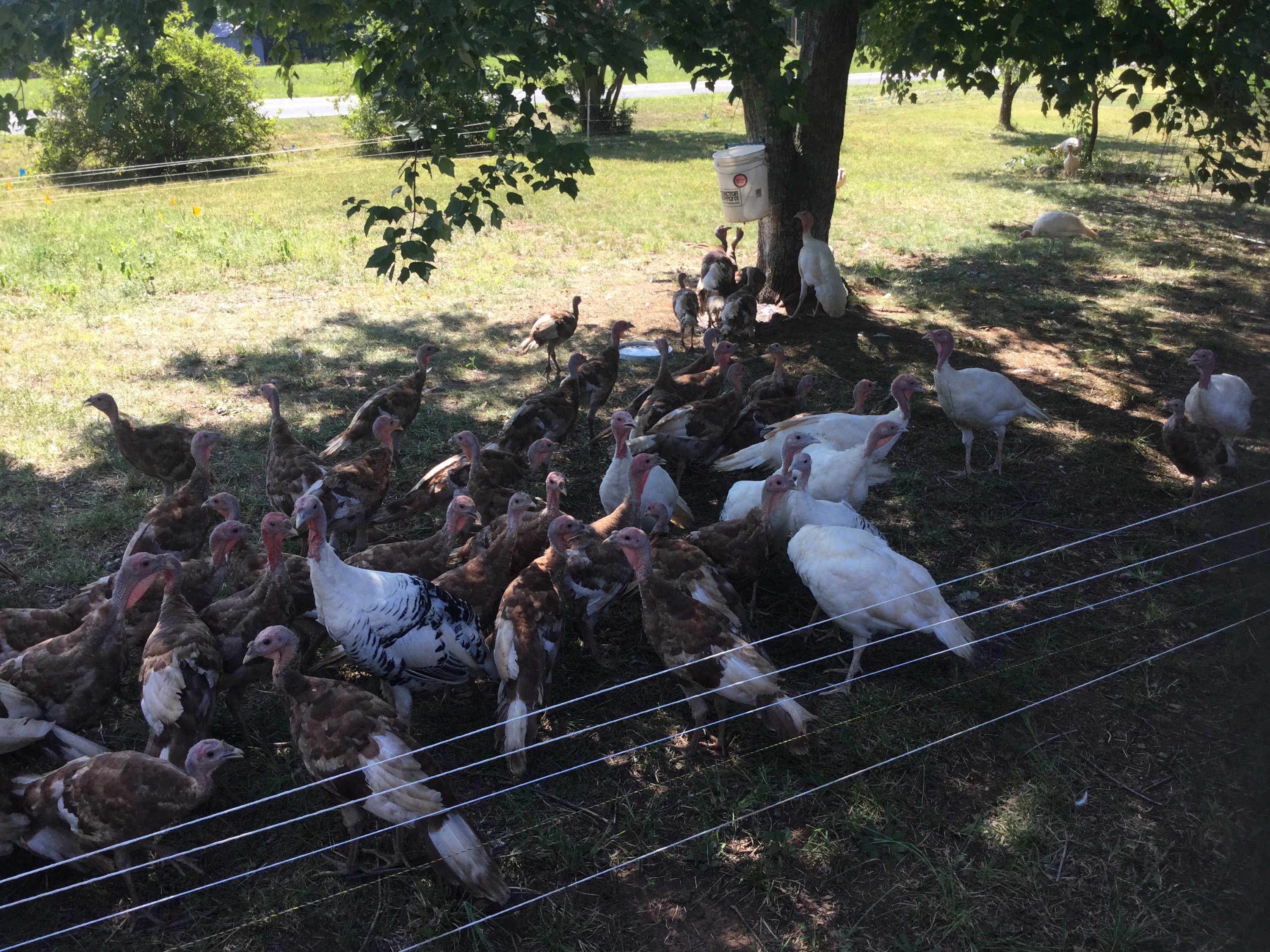We started this winter off with 15 turkeys as our breeding stock, all Bourbon Reds. They are nicely set up in their large and spacious converted shed and they have nice-sized fence that opens up into the greater woods beyond, for free ranging.
We only have 13 turkeys now–two we lost during early winter to predators in the night. The turkeys who return to their house at night are super safe (almost as safe as if they came inside to sleep with us) but two hens decided to hide and sleep deep out in the woods. Those two hens were eaten by raccoons (we think). We found them the next morning by following the feather trail. Not a pretty picture.
We are left with 3 toms and 10 hens. And we are expecting babies any day now!
They started laying eggs a few months ago, and we get about 7 eggs a day. We’ve been collecting some and saving them for incubating, which we should begin in a few days. But… For the past few weeks, one of the committed hens has been incubating some herself! She is our broody star!
Over a month ago, we noticed that she wouldn’t leave the house and she was moving around and sitting on any laid eggs she could find. After finally settling down to one corner–only leaving each day to eat and drinks–we decided to test her resolve. We went over to her and collected her eggs and she didn’t run away. We reached under her to grab the eggs and she didn’t budge. We had to pick her up and scoot her over to get the eggs!
This meant she was ready to sit on her own clutch of eggs. It seems that turkeys don’t fight you over eggs like broody chickens do, but they display the other symptoms of broodiness:
- Commitment to one location
- Commitment to one group of eggs
- Turning the eggs periodically
- Protection of eggs
- It didn’t seem to be in her nature to worry about us, but another hen literally rolled some of her eggs to another nest, trying to steal them, and she went over and stole them back!
Currently she is sitting on 16 eggs. There were two more but they busted over the course of incubation–this is not abnormal. There are a lot of variables at play that must be in alignment in order for the eggs to hatch:
- They have to be fertilized (let’s hope the toms are doing their job).
- They have to have been turned properly.
- They must have stayed warm enough.
- While their mom’s body heat is usually enough, we have had some pretty cold nights!
- They have to be viable.
- Sometimes eggs won’t hatch or poults won’t live even though the other variables are in alignment. You never really know. Life is tricky!
If all goes well, a few other hens will soon prove to be broody enough to start sitting on eggs! Some of the other hens are preparing–often when we look in the house there are 3 other hens piled in next to Mama Hen, trying to help!
With luck, all of the Free-Range, Heritage Turkeys we offer this year will be born and raised of our breeding stock!
.:.
